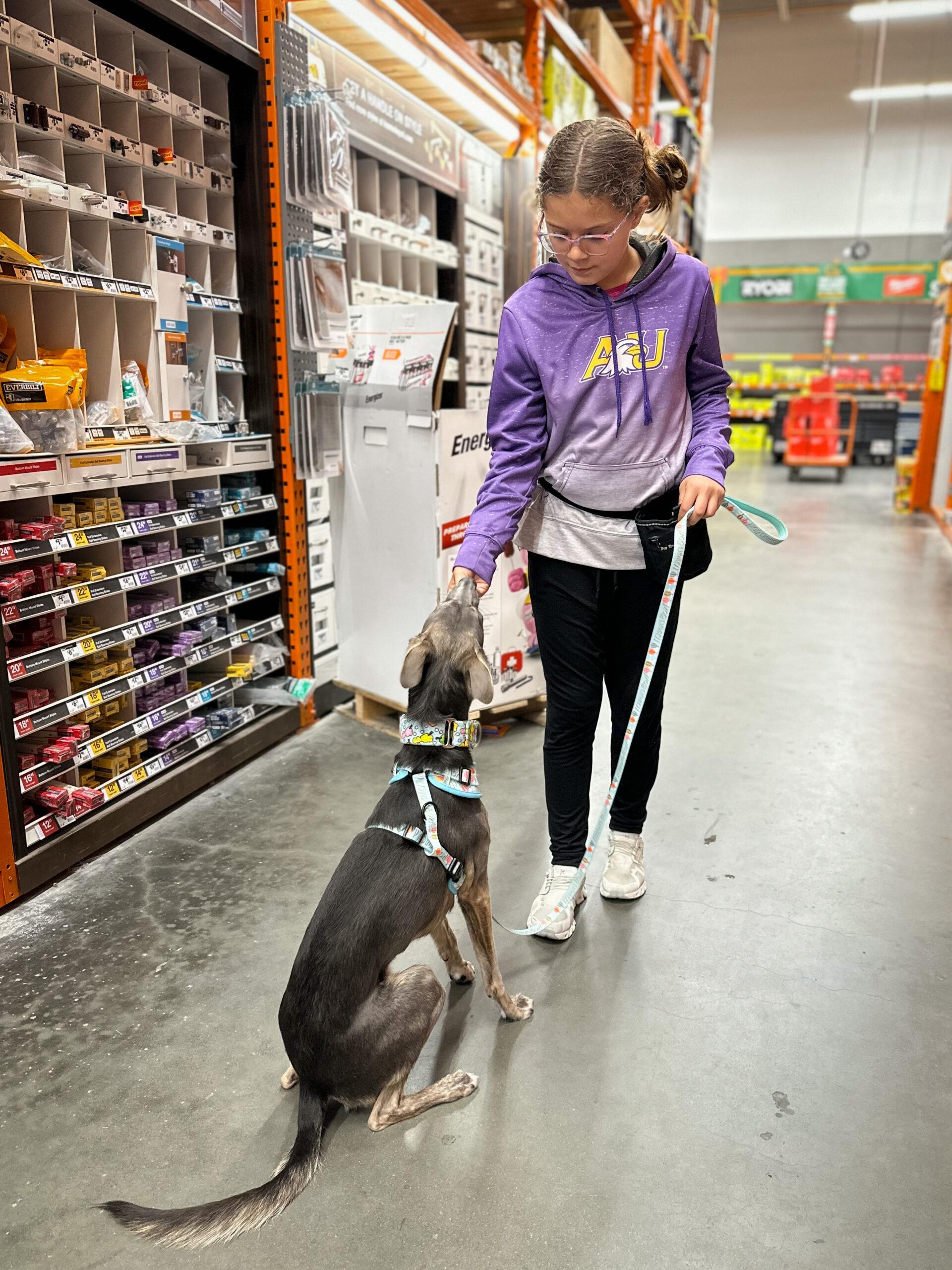Effective Dog Training Tips to Correct Common Behavioral Problems
Effective Dog Training Tips to Correct Common Behavioral Problems
Blog Article
Leading Pet Educating Methods Every Proprietor Ought To Know

Positive Reinforcement Methods
Making use of positive reinforcement methods is important for efficient canine training, as it fosters a relying on bond between the dog and the fitness instructor. This approach concentrates on fulfilling preferable behaviors instead of punishing unwanted ones, developing an environment favorable to learning. Incentives can include treats, appreciation, or playtime, which inspire canines to repeat the behaviors that gain them these benefits.

Furthermore, this approach improves the dog's enthusiasm for training sessions. They are extra engaged and responsive when pets connect training with favorable experiences. Dog training. Past instant therapy, positive support motivates a collective connection in between the pet and instructor, lowering anxiety and fear
To make the most of performance, it is vital to deliver rewards quickly, guaranteeing the dog links the habits with the reinforcement. Essentially, favorable reinforcement strategies not just generate better-trained canines yet also advertise an unified collaboration in between canine and proprietor.
Clicker Training Approach
The remote control training technique is a highly reliable strategy that develops upon the principles of positive support by including an unique noise to mark desired habits. This technique utilizes a tiny handheld gadget that creates a clicking audio, allowing trainers to interact with their dogs in a immediate and clear fashion. When a canine executes a behavior that the owner desires to motivate, the clicker is triggered, adhered to by an incentive, commonly in the type of treats or praise.
The key to effective remote control training exists in consistency and timing. It is vital to click at the precise minute the preferred habits happens, making certain that the dog associates the audio with the activity and the succeeding incentive. This method not only improves interaction but also cultivates a more powerful bond between the owner and the pet dog, as it motivates involvement and interaction during training sessions.
Remote control training can be related to a selection of commands and habits, from standard obedience to a lot more complex methods. Its versatility and effectiveness make it a preferred technique among professional trainers and family pet proprietors alike, paving the means for a trained and responsive canine buddy.
Chain Training Fundamentals
Effective chain training is vital for making certain a satisfying and secure walking experience for both pet dogs and their proprietors. A level collar may function for some canines, while others may profit from a harness that decreases drawing.
Introduce your canine to the leash progressively, allowing them to explore it in a comfy atmosphere. This includes satisfying your pet dog for strolling next to you rather than drawing ahead.
If your pet starts to pull, stop strolling quickly. Additionally, technique various strolling settings to help your dog adjust to disturbances.
Routine technique will certainly solidify your pet's understanding of leash rules. Keep in mind that leash training is a recurring process; persistence and uniformity will produce additional hints the best outcomes, promoting a favorable experience for both you and your canine companion.
Socializing Strategies
Socializing is an important facet of canine training that should preferably start throughout puppyhood but can be helpful at any type of age. Reliable socializing aids pet dogs develop self-confidence and reduces the likelihood of behavior issues. To carry out effective socializing strategies, subject your pet to a variety of settings, individuals, and various other pets.
Beginning with controlled setups, such as pup courses or arranged playgroups, where young pet dogs can interact safely. Slowly introduce your pet to brand-new experiences, consisting of different sounds, surface areas, and tasks. Make sure these experiences are rewarding and positive to develop a complacency.
For adult pet dogs or those lacking exposure, start with low-stress situations. Short, positive interactions with pleasant human beings and tranquil dogs can develop positive organizations. Use deals with and praise to strengthen preferable habits during these experiences.

Consistency and Patience
Identifying the significance of consistency and persistence in pet training is important for accomplishing long lasting outcomes. Irregular training can lead to confusion, making it tough for the dog to understand commands or behaviors, inevitably impeding progression.
Pet dogs, like humans, discover at their own speed. This fosters a relying on connection between the pet and owner, motivating an extra enthusiastic and ready student.
To grow consistency and perseverance, develop a regular training routine, make use of the same commands, and guarantee that all member of the family use the exact same training concepts - Dog training. By doing so, you develop a steady environment favorable to learning, enabling your pet to establish and flourish right into a well-behaved his comment is here buddy
Final Thought
In conclusion, effective pet training strategies, such as favorable support, remote control training, and proper chain training, are necessary for cultivating a healthy and balanced owner-dog relationship. In addition, executing socialization techniques and preserving consistency and patience throughout the training process contributes significantly to a dog's overall health. By incorporating these approaches, canine owners can help with the growth of well-adjusted, loyal animals, eventually boosting the lifestyle for both the owner and the dog.
Amongst the most popular approaches are positive reinforcement, remote control training, and leash training, each offering one-of-a-kind advantages that contribute to a well-behaved canine. As we discover these basic strategies, it comes to be noticeable that understanding their nuances can considerably impact the training experience and the canine's total actions.Using positive reinforcement techniques is vital for effective canine training, as it cultivates a trusting bond in between the pet dog and the trainer.In final thought, effective canine training methods, such as positive support, remote control training, and appropriate leash training, are important for promoting a healthy and balanced owner-dog partnership. By integrating these techniques, pet owners can help with the development of well-adjusted, loyal pet dogs, ultimately enhancing the quality of life for both the owner and the dog.
Report this page